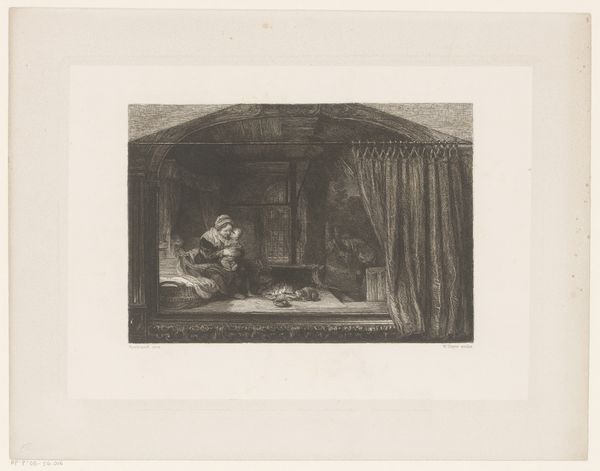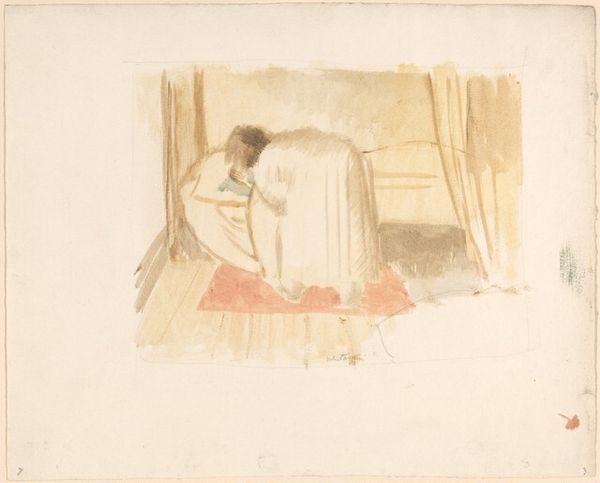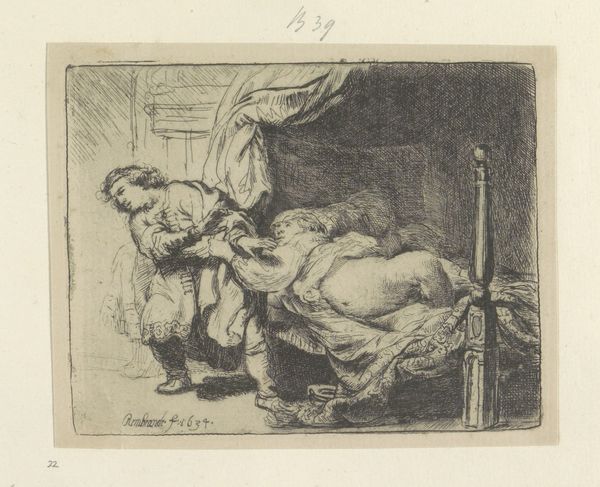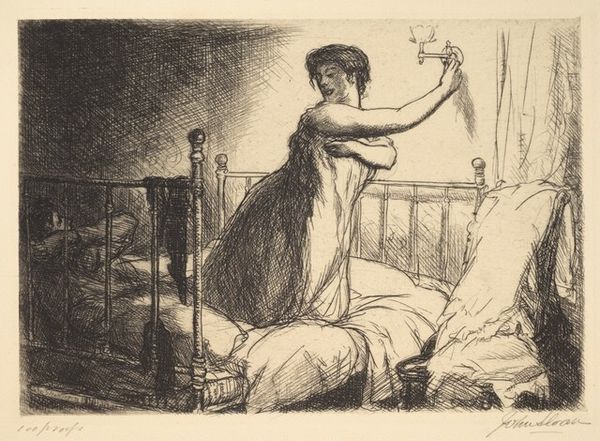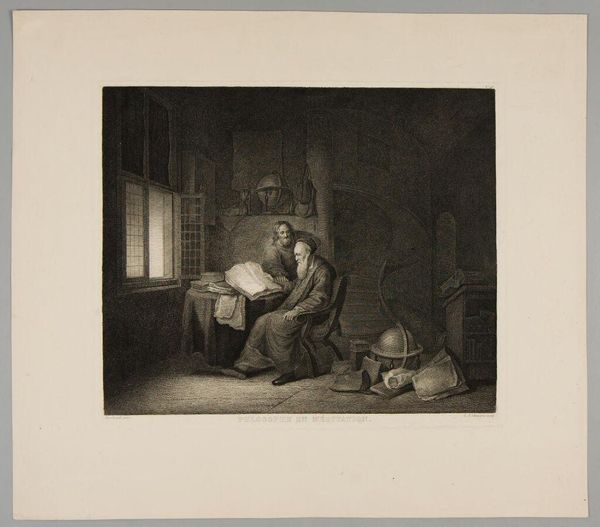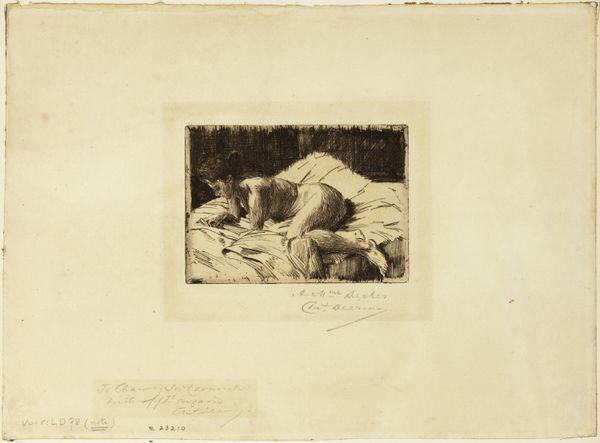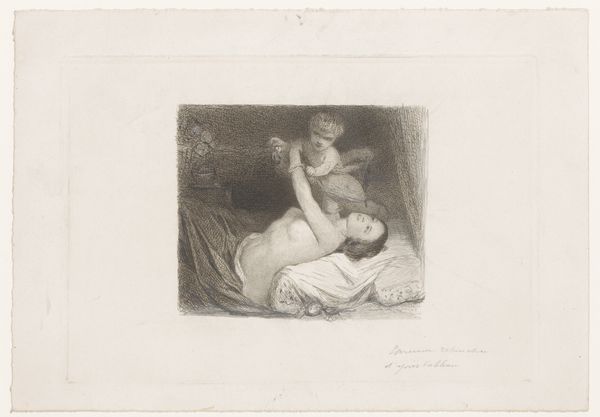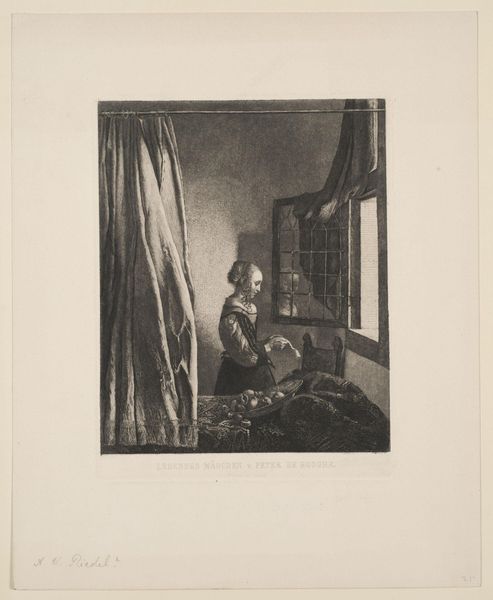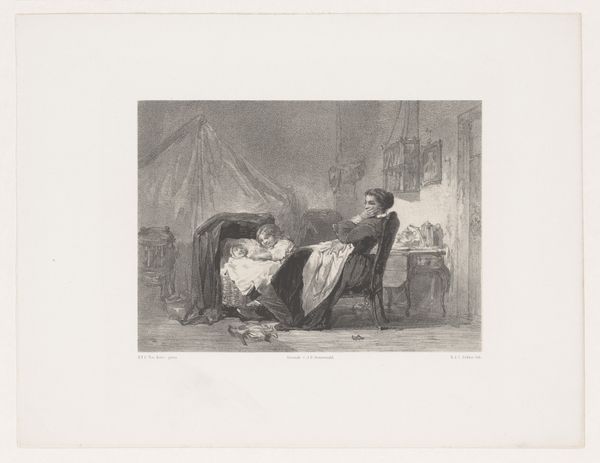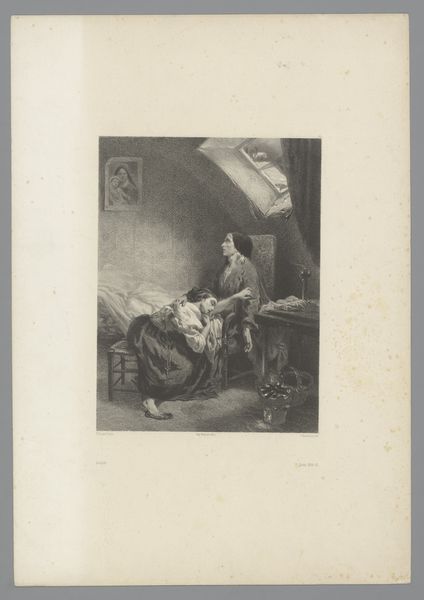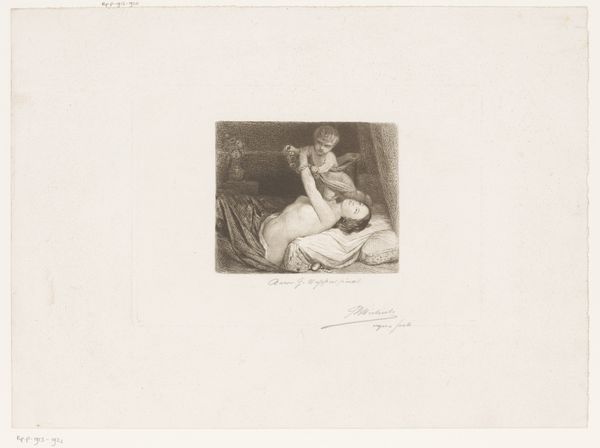
Dimensions: 4 7/8 x 6 7/8 in. (12.38 x 17.46 cm) (plate)9 9/16 x 12 3/8 in. (24.29 x 31.43 cm) (sheet)
Copyright: No Copyright - United States
Editor: So, here we have John Sloan's etching, "Turning out the Light," from 1905. It's incredibly intimate – the sketchy lines and shadows create this quiet, almost secretive mood. What captures your attention in this piece? Curator: Oh, the stolen moment, isn't it? Sloan's got that voyeuristic quality down pat. But I think what truly grips me is the story lurking beneath those scratches. Who is this woman? And the fellow in the bed – oblivious or feigning? The details aren't crisp; it's all suggestion, mood. And for me, that's far more compelling than a crystal-clear depiction. What do you make of her pose? Editor: It's interesting! It's like a ballet dancer caught mid-jete. She's actively, decisively, taking control of her environment... her night. I initially read the person in the bed as a husband, perhaps weary from work? The image suggests an element of genre painting...but does it subvert it? Curator: Subvert is the word! Sloan wasn't just painting pretty pictures; he was observing modern life in all its messy, unglamorous glory. The Ashcan School, right? You have to remember that, during this era, most art academies would've blanched at the idea of this scene as subject matter. Think about how the rise of industrialization changed everything and what it meant to experience this scene differently back then! Do you think he pities her or revels in capturing this scene? Editor: Mmm, neither pities nor revels, but respects her moment. Thank you. Considering its art-historical context and that balance between light, shadows and suggested narratives… it has layers. Curator: Absolutely! And hopefully, more to discover on repeated viewing! I learned much more from your reaction.
Comments
No comments
Be the first to comment and join the conversation on the ultimate creative platform.
